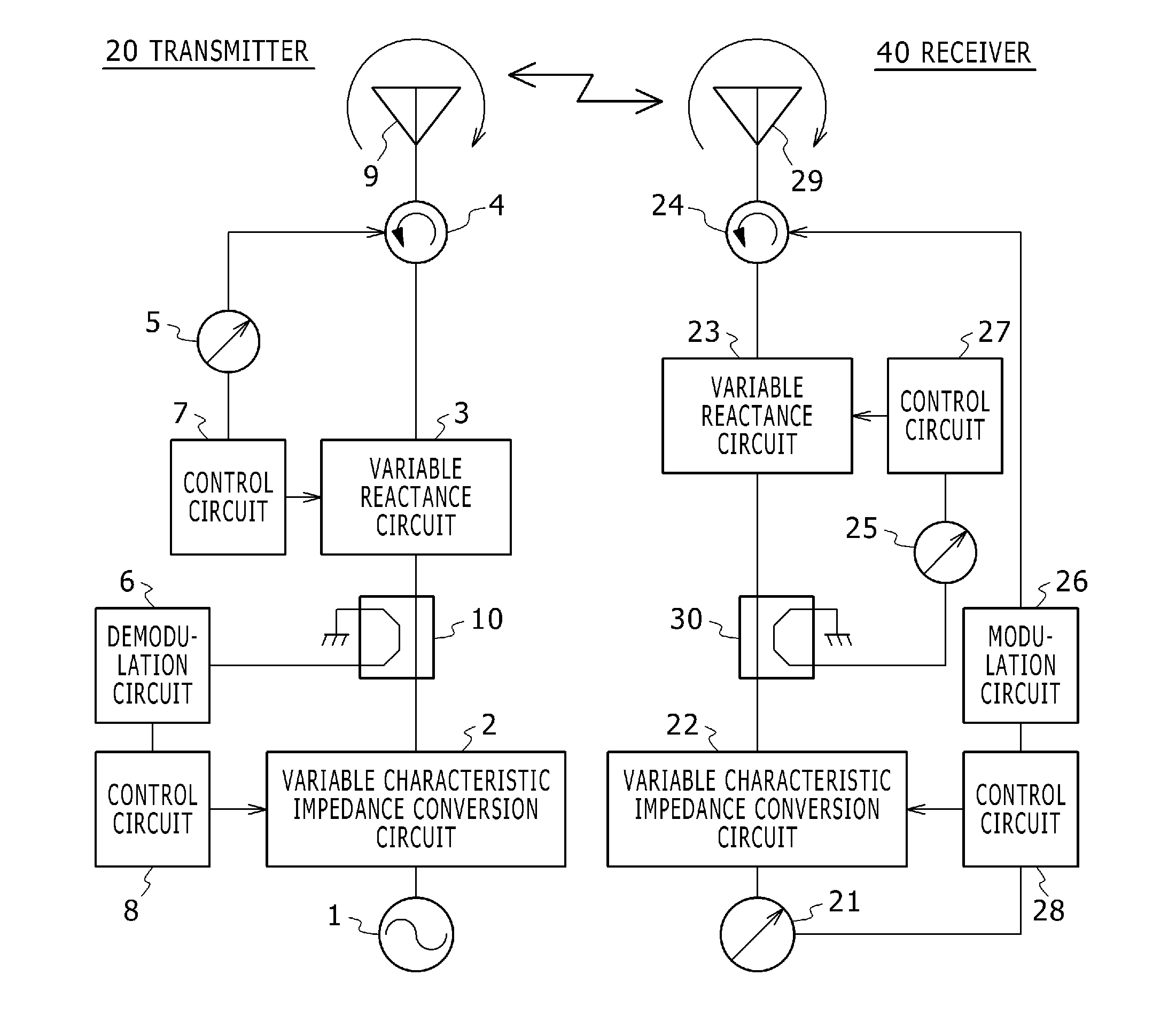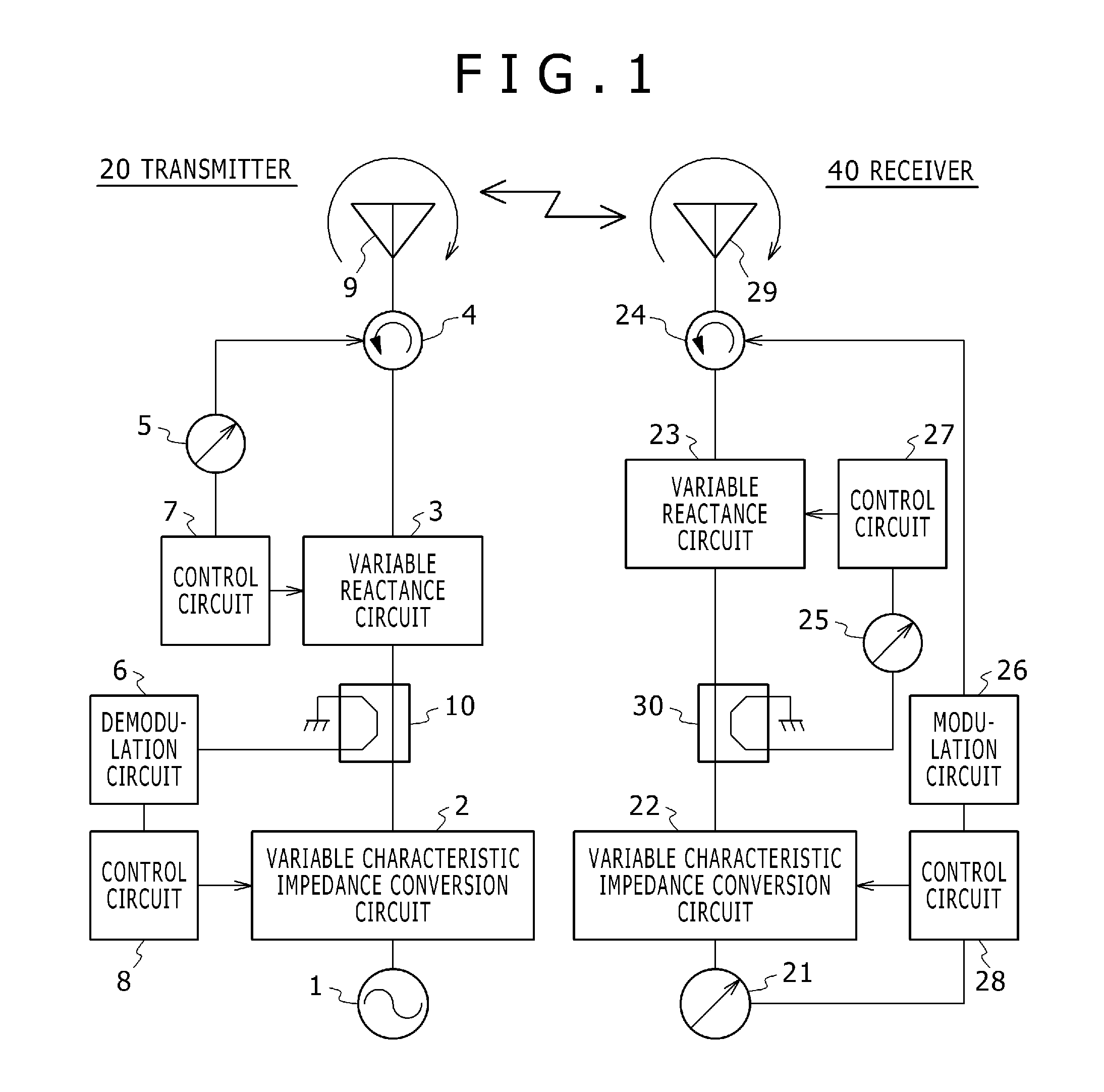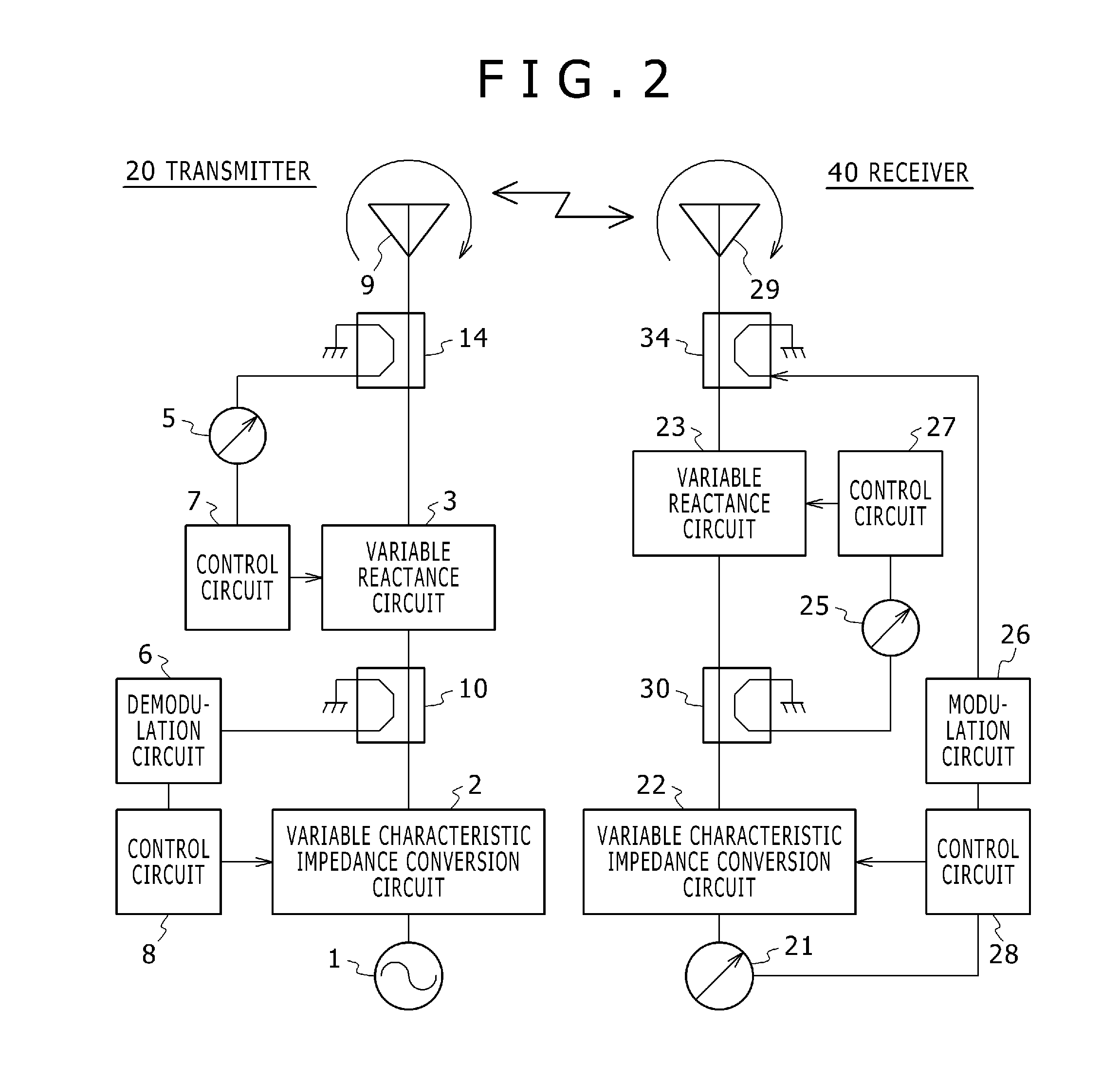Radio Power Transmission Apparatus and Radio Power Transmission System
a power transmission system and power transmission technology, applied in the direction of charging stations, battery/fuel cell control arrangements, transportation and packaging, etc., can solve the problem of extremely low power transmission efficiency and achieve the effect of high power transmission efficiency
- Summary
- Abstract
- Description
- Claims
- Application Information
AI Technical Summary
Benefits of technology
Problems solved by technology
Method used
Image
Examples
first embodiment
Configuration of the Radio Power Transmission Apparatus
[0046]As the first embodiment of the present invention, a typical configuration of the radio power transmission apparatus is explained.
[0047]FIG. 1 is a diagram showing a typical configuration of a radio power transmission apparatus according to the first embodiment of the present invention.
[0048]In FIG. 1, power is transmitted from a transmitter 20 to a receiver 40 in a magnetic resonance state by using electromagnetic waves. A configuration combining the transmitter 20 and the receiver 40 is the radio power transmission apparatus according to the first embodiment.
Transmitter 20
[0049]In the transmitter 20, high-frequency power generated by a power generation circuit 1 is radiated to the air by a power transmitting circular polarized-wave antenna 9 through a variable transmitter characteristic impedance conversion circuit (a variable characteristic impedance conversion circuit) 2 and a variable transmitter reactance circuit (a v...
second embodiment
Configuration of the Radio Power Transmission Apparatus
[0083]Next, a second embodiment of the present invention is explained as follows.
[0084]FIG. 2 is a diagram showing a typical configuration of a radio power transmission apparatus according to the second embodiment of the present invention.
[0085]FIG. 2 is different from FIG. 1 in that, in place of the power transmitting circulator 4 (shown in FIG. 1) and the power receiving circulator 24 (also shown in FIG. 1), a second power transmitting directivity coupler 14 and a second power receiving directivity coupler 34 are used.
[0086]It is necessary to decrease the degree of coupling between the second power transmitting directivity coupler 14 and the second power receiving directivity coupler 34 to a value which reduces the effect on the efficiency of the power transmission from the transmitter to the receiver. For example, a value in a range of −10 dB to −20 dB is used.
[0087]In accordance with the second embodiment, the directivity co...
third embodiment
Configuration of the Radio Power Transmission Apparatus
[0092]Next, a third embodiment of the present invention is explained as follows.
[0093]FIG. 3 is a diagram showing a typical configuration of a radio power transmission apparatus according to the third embodiment of the present invention.
[0094]FIG. 3 is different from FIG. 1 in that omitted elements include the power transmitting circulator 4, the power receiving circulator 24, the transmitted power measurement circuit 5, and the received power measurement circuit 25.
[0095]In addition, the added element is a power receiving demodulation circuit 31 (a second demodulation circuit).
[0096]In addition, elements are modified as follows. The first power transmitting control circuit 7 for controlling the variable transmitter reactance circuit 3 executes the control by an output signal of the power transmitting demodulation circuit 6 (a first demodulation circuit) and the first power receiving control circuit 27 for controlling the variab...
PUM
 Login to View More
Login to View More Abstract
Description
Claims
Application Information
 Login to View More
Login to View More - R&D
- Intellectual Property
- Life Sciences
- Materials
- Tech Scout
- Unparalleled Data Quality
- Higher Quality Content
- 60% Fewer Hallucinations
Browse by: Latest US Patents, China's latest patents, Technical Efficacy Thesaurus, Application Domain, Technology Topic, Popular Technical Reports.
© 2025 PatSnap. All rights reserved.Legal|Privacy policy|Modern Slavery Act Transparency Statement|Sitemap|About US| Contact US: help@patsnap.com



